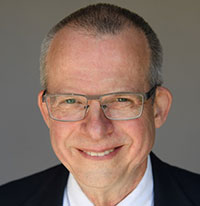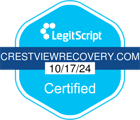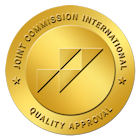With the many drugs that people can abuse, you may be wondering: what is Krokodil? Could my loved one be using it?
Krokodil is the reptile-sounding street name for the chemical “desomorphine”, a synthetic opioid drug. That means that it’s similar to heroin, fentanyl, morphine. And it’s not that, unlike prescription opiate pain killers, albeit less regulated.
It, therefore, causes a sedative effect when used. And, furthermore, it is very addictive.
So here’s what you need to know about this powerful and dangerous drug. And, in addition, we’ll share how our substance use treatment center in Portland, Oregon can help.
How Prevalent Is Krokodil Abuse?
Experts have trouble gauging actual Krokodil prevalence. But they categorize it with heroin and other opioids. Nearly one million people in the US use heroin each year. Of those, just over one-half million have become dependent. And, not surprisingly, in the US, around 70 thousand people died from opioid overdose in 2017, which is not an outlier. It’s common among young people. And, contrary to what many believe, you’ll find it in cities, suburbs and rural areas alike.
Experts think that Krokodil is less common in the US compared to other Western countries because Codeine, its active ingredients, is highly-regulated.
What is Krokodil?
Krokodil is usually a clear or colorful liquid. It has been in existence since the 1930s. But, strangely, it experienced a renaissance in the early 2000s when people in Russia began to make it after the government cracked down on the influx of drugs from other countries. Over time, it has moved elsewhere, including the U.S. In these locations, it’s considered a “cheap” alternative to heroin.
Someone using Krokodil typically injects it into a vein in much the same way a person might use heroin. This creates a very short period of euphoria. But it also comes with a number of risks.
What Are the Dangers of Using Krokodil?
Is Krokodill a dangerous drug? As it turns out, it’s actually a very dangerous drug.
Krokodil is made by combining codeine with other household chemicals, including paint thinner, gasoline, iodine, and red phosphorus. All of these chemicals are poisonous on their own. However, when they’re combined and injected into the body, they create an even more dangerous substance. Krokodil quickly destroys tissue, causing gangrene. It’s called “the flesh-eating drug” for this reason.
People who use Krokodil often end up with serious health problems, including:
- Infections
- Blood poisoning
- Gangrene
- Abscesses
- Skin ulcers
- Amputations
Krokodil use can also lead to death. It’s estimated that for every one person who dies from using Krokodil, there are 10 more who die from the complications of its use.
In fact, the use of Krokodil is known to lead to serious medical complications like kidney, lung and heart damage. In addition, blood vessel damage, the need for skin grafts and even amputation are common.
What Are Common Krokodil Street Names?
In addition to Krokodil, a person might also refer to it as:
- Crocodile
- Russian Magic
- Poor Man’s Heroin
- Zombie drug
- Croc
- Alligator Drug
What Are The Signs of Krokodil Drug Abuse?
One sign of use is the presence of a drug kitchen. Krokodil is relatively easy to make. That is if they can get their hands on Codeine. So many people try to make it themselves. On top of that, be on the lookout for:
- Sleeping at odd hours and drowsiness
- Injection sites
- Dark scaly, green skin, particularly around the injection site
- Severe itching
- Heavy limbs
What Is Krokodil Withdrawal Like?
When you use a drug like Krokodil, your body becomes dependent on it for survival. As a result, when you take that drug away, the body reacts violently as it tries to relearn how to function without it. You may experience:
- Extreme cravings
- Muscle aches
- Severe anxiety
- Runny nose
How Is Krokodil Addiction Treated?
 What is Krokodil drug treatment like? Crestview Recovery provides treatment for addiction in several settings to meet individual needs. These include partial hospitalization, intensive outpatient and/or outpatient, in addition to, aftercare. That last one is important because addiction is a chronic disease. Those with chronic diseases need lifelong care and support to stay healthy.
What is Krokodil drug treatment like? Crestview Recovery provides treatment for addiction in several settings to meet individual needs. These include partial hospitalization, intensive outpatient and/or outpatient, in addition to, aftercare. That last one is important because addiction is a chronic disease. Those with chronic diseases need lifelong care and support to stay healthy.
Treatment for Krokodil addiction begins with detoxification. Detox is when the body rids itself of the drug. It’s important to have medical supervision during this time because there can be serious withdrawal symptoms.
After the person has detoxed, they can begin therapy. There are many different types of therapy but all have the same goal; to help the person understand their addiction and why they use. Therapy also teaches coping skills to deal with triggers and cravings. Triggers are anything that make a person want to use drugs. Cravings, on the other hand, are intense urges to use drugs.
We also offer extended length 90-day programs to increase recovery success rates. And we’re ideally located for those in the Pacific Northwest. We take a holistic approach to healing. That includes types of psychotherapies, group sessions, family therapy programs. But additionally, we offer experiential therapy and other activities that promote self-awareness, healing, and a lifelong commitment to staying in recovery.
Get Help Today
What is Krokodil drug addiction doing to your life or the life of a loved one? You can take control and find healing through treatment. Call us at 866.262.0531 to start down the path to recovery.
































